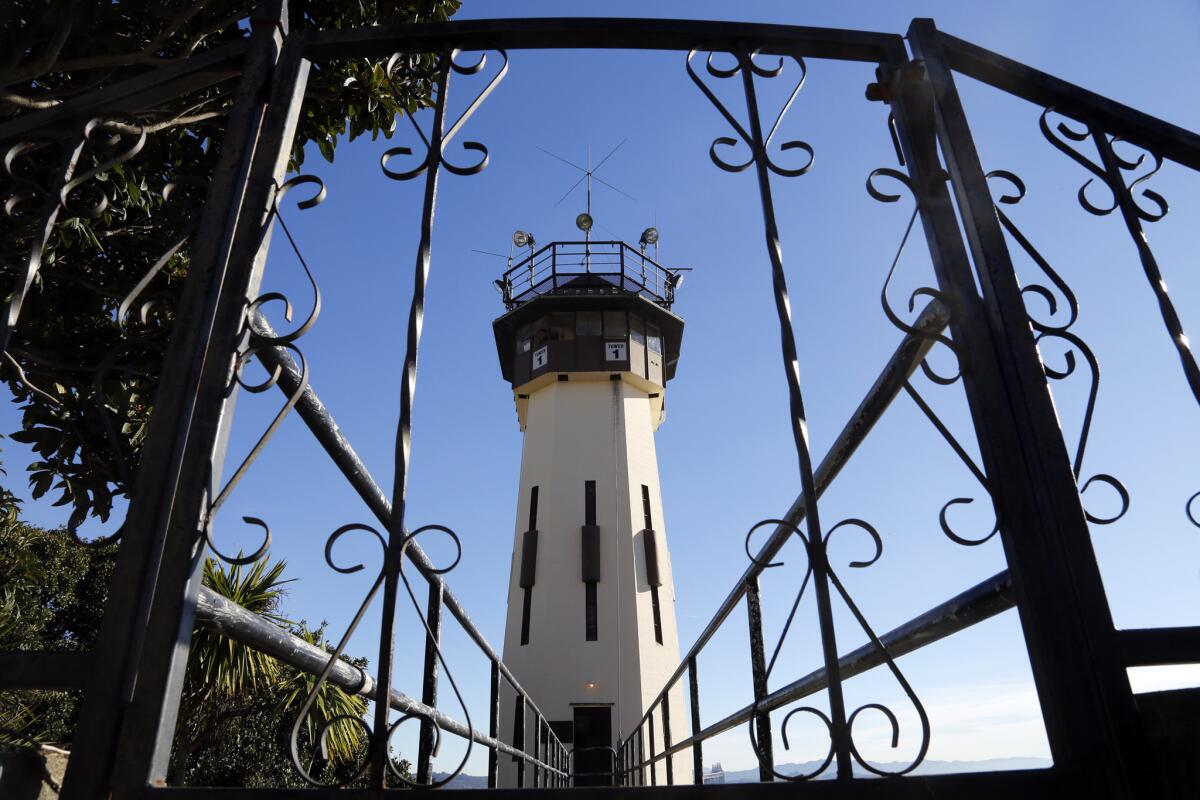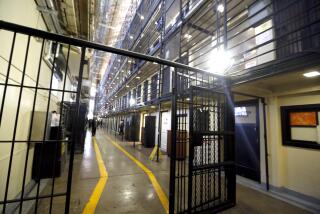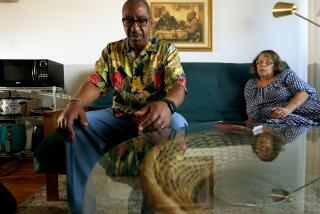Judge rejects more inmate releases from California prisons

- Share via
A federal judge has denied an emergency motion that would force California officials to develop a plan to further reduce the state’s inmate population by thousands in order to curb the spread of the coronavirus, saying the state has already implemented a myriad of changes.
In his ruling on Friday, U.S. District Judge Jon S. Tigar said lawyers for the inmates had to demonstrate Gov. Gavin Newsom and correctional officials were indifferent to protecting the inmates and therefore in violation of their federal rights. Inmates want the California Department of Corrections and Rehabilitation to create a detailed plan that would change the way prisoners are housed in the state’s 35-prison system and release more inmates or house some outside of prisons.
“The COVID-19 pandemic is unprecedented and no one questions that it poses a substantial risk of serious harm to plaintiffs,” Tigar wrote in his ruling. “But given the numerous and significant measures the State of California has taken and continues to take in response to COVID-19, the court cannot conclude that state officials have been deliberately indifferent.”
“The state responds that it already has such a plan — one that includes the release of thousands of inmates to reduce the prison population, the cessation of visitation and the intake of new prisoners, sharp reductions in inmate transfers to avoid the spread of the contagion, detailed protocol to manage symptomatic inmates and staff, increased disinfectant effort and adjustment to housing and physical activities to increase physical distancing.”
Tigar’s ruling comes after a three-judge panel rejected mass releases or other drastic measures, saying it was not their decision to make. The panel, formed in 2007 to address chronic prison overcrowding, said it was more appropriate to be handled by a single judge such as Tigar, who oversees inmate medical care.
As of Friday, 75 inmates and 83 workers in the state’s prison system were diagnosed with COVID-19. During a Thursday hearing, Tigar said the state’s death toll and overall numbers were far worse than those reflected in the prisons.
Addressing the judge, Alison Hardy, senior attorney for the Prison Law Office, said “my concern is not that the virus is rampant in all 35 prisons ... more it is a tinder box.” She warned that the spread in a few prisons, once it entered a dorm, suggests it could quickly overwhelm the system.
But Tigar on Friday said California has already taken measures to reduce overcrowding, including halting the admission of an expected 3,000 new inmates from county jails and the planned early release of some 3,500 inmates over the next two months. He also noted that the state has distributed hand sanitizer and 22,000 cloth masks across the prison system and stopped the mixing of inmates from one dormitory to another.
Tigar pointed out that 1,300 inmates had been moved out of dormitories with close quarters into other spaces. During Thursday’s hearing, a state lawyer said such movement had been undertaken at the California Institution for Men in Chino and at San Quentin, where gyms were being used for new eight-person modules.
The judge wrote that an argument by the inmates’ lawyers that 22 men in one dorm at California Institution for Men had tested positive showed the need to spread out inmates actually supported the argument that the state had “contained the spread of the disease by not transferring inmates.”
Tigar said that the state’s prison population had effectively been reduced in the past month by nearly 4,000 releases. As of Thursday, there were 110,345 inmates in the state’s prison system.
Before the releases began, the state prison’s medical system reported that 45,000 inmates had at least one underlying condition that made them vulnerable to a coronavirus infection, including 14,700 inmates with asthma.
The federal judge noted that the state had agreed and begun implementing a directive from a federal receiver to ensure social distancing inside the prisons.
More to Read
Sign up for Essential California
The most important California stories and recommendations in your inbox every morning.
You may occasionally receive promotional content from the Los Angeles Times.











